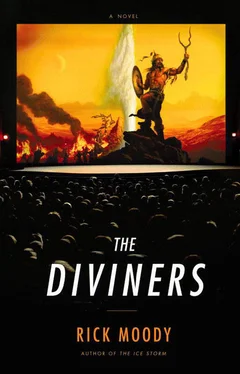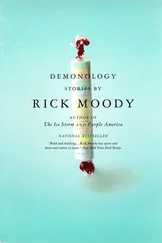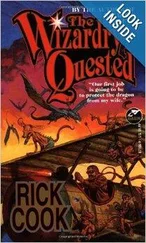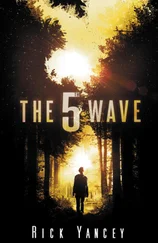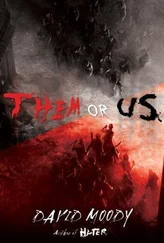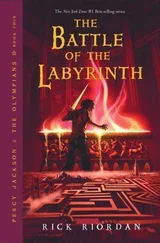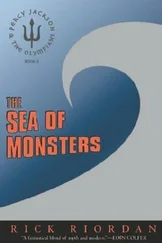The eruption of color is terrifying. The eruption is painful, and the pain is associated with this perception of the brick and its history. And there is a word written on the side of the brick, it must be that a word is written there, this occurs to her, a word that will identify the factory where the brick was made; she is aware of wanting to read the word, though words and letters are impenetrable to her, and she is not sure what an alphabet is or if she could ever read from one. Still, this name on the brick will have some kind of lesson for her.
The victim has no name, and in the intervals of hearing nothing and feeling nothing and seeing nothing, this namelessness is of no consequence. In fact, it’s a blessing. Without a name, there is no sense that the not-hearing and not-seeing and not-feeling of the victim are anything but aspects of a system that never loses any energy, never winds down. There’s no need in a system like this for a name, so the victim does not know that she has no name, nor does she experience herself as a victim, except as a victim of eruptions of light and color. Light, associating itself with some agony in her skull, implies she has a skull, that she is not simply a brick that has some name written on it, for example, the word Utica. What a shapely and beautiful word Utica is because it must be the name of a something. The name must be other than the brick; it must be a recognition of some other system of things, a system that includes light and sound, and that includes an overheard pageant of insects chirruping words like Utica, which is or must be a place where bricks are made and which may or may not be the place that this brick was made.
She has only a brief time to notice and evaluate the history of the brick, which is a history of the land in a place called Utica, however, because there is blackness and the blackness is without period or characteristic, and when she is enveloped in it she is it, except that she isn’t, because more and more the chirruping seems to resemble certain things, words, though she isn’t sure from which past she remembers these things, because if she is a brick, how would it be possible that she could remember things, unless, for example, she remembers the earth. Still, she remembers these words or thinks she overhears these words, and these words are indicators of something having to do with a brick and having to do with a woman.
One day, from a mothballed place, she performs a trick that she can’t remember ever having performed before. Suddenly, for a moment, she sees, and this is a monumental event for the victim because when she is a seeing apparatus, she believes that she may not be a brick, but rather a woman, or at least attached to the body of a woman. And there are other things she knows, in this brief moment before the system is shut down again. She believes, for example, that she knows about blankets.
There is such a thing as a blanket, and a blanket is blue, because this is its color. The place where she is, this thinking and seeing apparatus (which may or may not be a brick or a woman), is in bed, and she is looking at a blanket, and this is what a blanket is: a blanket is a thing that is draped across a body to prevent it from growing cold, and whoever it is who puts the blanket on the body, if in fact a person puts the blanket on the body, this is an entity of kindness. There are sheets here, too, this is another word she remembers, and there’s a feeling to sheets, depending on what kind of sheets they are and whether these sheets are thin or heavy. Sheets feel a certain way when they are crisp, starchy, or draped across your body. Still, the woman has had enough of thinking, and so she sleeps again, and this sleep may last for a day or more, and the sleep may include a portion of consciousness that may be partly awake and partly asleep, and these portions of consciousness may include scraps of things that are said to the victim, or these portions of consciousness may not, or that is what a doctor says within earshot of the victim, that it is okay to speak to her and to touch her, as these things may help her.
Which implies that there must be others in the room. There are people in the room. The brain injury that the brick caused makes it hard to recognize these others or to tell anything about them, and so she sleeps through the notion of other people, perhaps she forgets them for an entire day, so that it is Monday, or even Tuesday, and she has entirely forgotten that there are people in the room. But it becomes unavoidable, the conclusion that she is a mind exercising itself, and in these days when she is asleep or unconscious, she begins to have certain tasks that she performs; one of these is the cataloguing of colors, since she is often seeing colors: mustard, orange, rust, russet, mud, black.
What is a brick for? A brick is for building things. And what is it that is built with the brick? Certain kinds of buildings. And where are these buildings being built? In a town or city, mostly. These things are elementary, and even a brain that has been badly distressed, and on which there have been performed various surgeries, has stored enough information, somewhere, to know these things. Bricks are for buildings in the cities and towns. And who builds the buildings? The buildings are built mostly by men. There are men with wheelbarrows, and they are moving many bricks from one spot to another. Or there are men driving forklift vehicles with many bricks being transported from one place to another, so that buildings may be made of these bricks.
These bricks are from Utica, and Utica is a place in Asia. She assumes that Utica is in Asia, and therefore it follows that many Asian men have cooperated in the making of these bricks, and these bricks have come from Asia because they are cheaper in Asia, or the creation of these bricks is inexpensive there, that is why bricks would come a long way, because she believes that New York City, where she imagines herself to be, is a long way from Asia. She believes that she is a woman who is in New York, and the bricks are in New York, too, having come from Asia, by boat.
What does the idea of the woman have to do with the brick? When she is seeing things again, she is in a place that is white and pale green, and there is a television mounted on the wall, and there are these people, and the people are looking at her, and she can see and hear. People are blinking at her, and there is something unusual about the people that she can’t understand at first. They look unusual, not like the people that she would have expected to be in the room. They blink and stare. Is blinking a method of communicating? She stretches her arms above her, and they cannot, apparently, believe what they are seeing. They begin saying something, and the thing that they begin saying is probably her name. At least she later believes that it might be her name, because they keep saying it. Samantha, Samantha, Samantha. She doesn’t know anything about this word, which would imply that it must be a name, because a name is a word that has no other useful associations. A name is a word that doesn’t do anything. “Samantha, can you hear us? Samantha?” Could it be possible that these are her parents? These little disheveled people? What’s wrong with their eyes? They have strange eyes. It occurs to her, after a while, that this must be the way people look when they are from Asia, but maybe she is only thinking this because of the brick. The brick comes from Asia, after all, so now everything comes from Asia. The nurse probably comes from Asia. Everybody is from Asia.
She says, “Can I have a glass of water?”
Pandemonium. The man who may or may not be from Asia goes rushing out into the corridor, calling for a nurse, and the woman who is still in the room runs back and forth thanking God. Many things are getting clearer to the victim now. For example, there is some reason why she keeps thinking about Utica and about the factory there that makes bricks. But a lot of other things are not clear, like whether she is truly Samantha, and who these people are. The nurse comes, and the nurse is followed by a doctor, and the doctor is followed by a policeman, why a policeman she does not know, and they are all in the room, and they are laughing, and the people who were waiting, the Asian people, are hugging her, and this goes on for a moment, until composure sets in generally, and then the doctor asks if he can make a brief examination. Not being able to think of much else to say, she agrees.
Читать дальше
